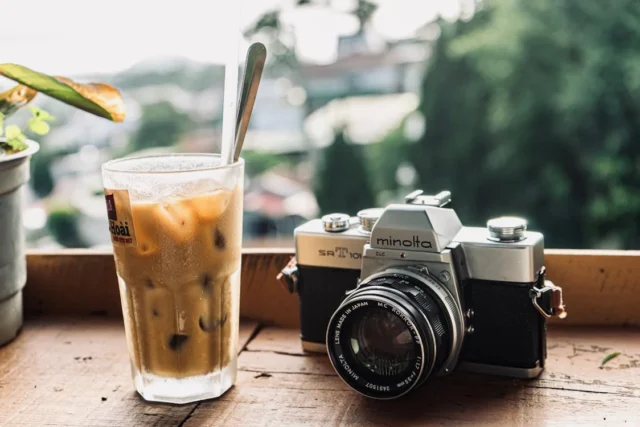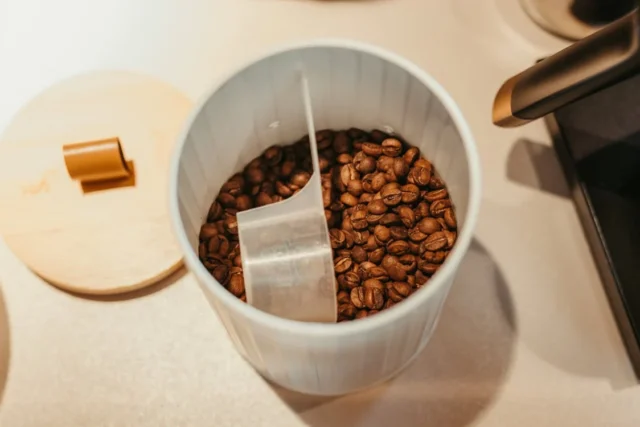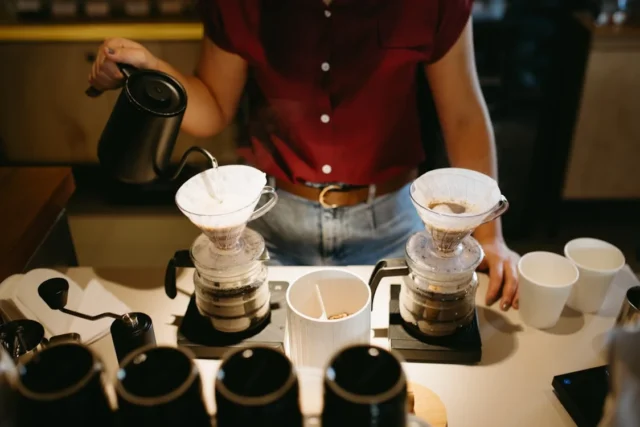
Imagine waking up each morning to the comforting aroma of freshly brewed coffee, enveloping your senses and stirring delightful memories of cozy cafés. For many, that experience often feels out of reach without stepping out into the bustling world of coffee shops.
Yet, what if the secret to that café-quality cup of coffee lies not in elaborate rituals or expensive equipment, but in understanding essential brewing techniques that anyone can master?
This article will guide readers through the journey of discovering how to brew café-quality coffee at home, revealing that even a novice can become a skilled home barista with a few key insights and the right tools.

Essential Brewing Techniques
Crafting exceptional at home requires an understanding of various coffee brewing techniques. Two prominent methods, pour-over coffee and immersion brewing, each offer unique benefits and flavor profiles. By exploring these techniques, brewers can enhance their home experience.
Brew Methods: Pour-Over vs. Immersion
Pour-over emphasizes control over the brewing process. This method involves pouring hot water over coffee grounds in a slow and deliberate manner, allowing for a clean and crisp cup. Techniques like the Hario V60 or Chemex epitomize this approach, making the flavors brighter and more aromatic.
In contrast, immersion brewing, such as with a French Press, allows coffee grounds to steep in water for an extended period, leading to a rich and full-bodied flavor. This technique captures oils and fine particles, resulting in a heavier mouthfeel. Both methods have their advocates, so personal preference will guide the choice between them.
Blooming Your Grounds
An essential step in many coffee brewing techniques is the blooming process. When preparing coffee, add a small amount of hot water to the coffee grounds and allow them to sit for about 30 seconds. This initial hydration helps release trapped gases, primarily carbon dioxide, significantly improving flavor extraction. A well-bloomed coffee will yield a more flavorful and aromatic cup, enhancing the overall enjoyment of either pour-over coffee or immersion brewing.
The Role of Grinders in Brewing

Coffee grinders play a crucial role in the brewing process, significantly influencing the flavor and aroma of the final cup. Choosing the right grinder can make all the difference, especially when it comes to achieving a uniform grind size. This section explores the types of coffee grinders available and how burr grinders stand out in delivering consistent results.
Types of Grinders: Burr vs. Blade
Coffee grinders generally fall into two categories: burr grinders and blade grinders. Burr grinders crush beans between two surfaces, allowing for a controlled and uniform grind size. Blade grinders, in contrast, chop coffee beans with rotating blades, leading to uneven particle sizes. This inconsistency can hinder optimal extraction and negatively impact the flavor profile.
Achieving Uniform Grind Size for Optimal Extraction
A uniform grind size is critical for optimal extraction and flavor enhancement. Different brewing methods, from the French press to espresso, have specific grind size requirements. Burr grinders, such as those made by Breville or Baratza, offer adjustable settings that cater to various brewing techniques. By investing in quality coffee grinders, enthusiasts can achieve the desired grind size necessary for their preferred brewing method.
Choosing the Right Brewing Equipment
Selecting the right brewing equipment is crucial for making café-quality coffee at home. Different devices cater to various preferences and techniques, allowing for unique flavor profiles and brewing experiences.
Popular Brewing Devices: French Press, Aeropress, and Chemex
The French Press stands out as a beloved option among coffee enthusiasts. Its immersion method extracts oil and flavor, creating a rich, full-bodied cup. The process involves steeping coarse coffee grounds in hot water, followed by pressing down a metal or plastic plunger. This technique highlights the coffee’s natural flavors.
The Aeropress offers versatility and ease of use. Its design allows for rapid brewing with a range of grind sizes and brew times. With varying methods, users can experiment to achieve different taste profiles, from smooth to bold.
Investing in Quality Espresso Machines
For those passionate about espresso-based beverages, investing in espresso machines is vital. Quality machines can significantly enhance the home brewing experience, offering precise control over brewing parameters.
Milk Frothing Techniques for Specialty Drinks
Mastering milk frothing techniques is essential for creating high-quality specialty coffee drinks. This process significantly enhances the texture and visual appeal of beverages like lattes and cappuccinos. Understanding different frothing methods allows home baristas to experiment and find the best approach for their preference.
Understanding Different Frothing Methods
Several methods can be employed for milk frothing, each producing unique results:
Steam Wand: The most common tool found in espresso machines, this method uses steam to froth milk quickly. It requires practice to control the angle and technique to achieve creamy microfoam.
- Manual Frother: A handheld option that requires more effort, it incorporates air into the milk while whisking. This method is ideal for those who enjoy a more hands-on approach.
- Electric Frother: An automated device that simplifies the frothing process, offering consistent results. It is perfect for beginners who want to make specialty coffee drinks without the learning curve.
Creating Perfect Microfoam for Lattes
Microfoam creation is vital for achieving the desired texture in lattes. The following tips can help baristas produce creamy and stable microfoam:
- Start with cold milk for better foam stability.
- Heat the milk to a temperature between 150°F and 160°F to maintain sweetness while ensuring it doesn’t scald.
- Incorporate air into the milk deliberately, positioning the steam wand just below the surface to create a whirlpool effect.
- Continue frothing until the milk reaches a velvety texture, ensuring there are no large bubbles.
By mastering milk frothing techniques, anyone can elevate their specialty drinks at home, creating a café-quality experience with every cup.
Conclusion
Brewing café-quality at home is an achievable goal for anyone armed with the right knowledge and techniques. As highlighted throughout the article, the foundation of an exceptional experience lies in selecting high-quality beans, mastering precise brewing methods, and investing in appropriate equipment. Each step, from choosing the freshest coffee to fine-tuning brewing parameters, plays a crucial role in transforming an ordinary cup into a rich and flavorful delight.













